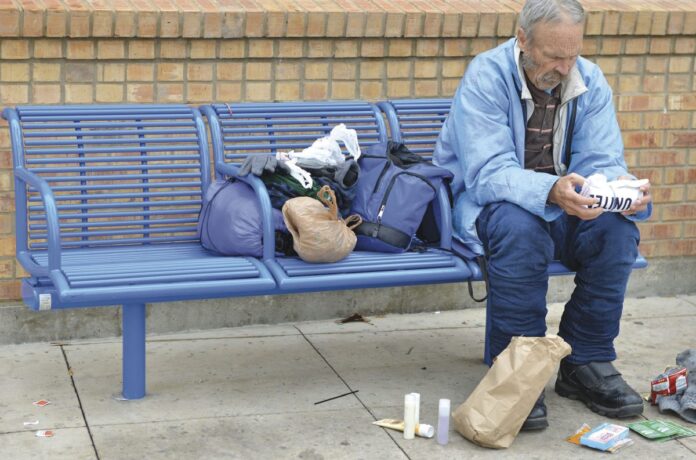BROWNSVILLE — Under an overcast sky, staffers from Friendship of Women Inc. set out Tuesday morning in downtown Brownsville to survey members of the homeless community and distribute care packages.
The information they collected was part of the Point-in-Time Count, a nationwide survey on a single day in January that aims to take a snapshot of the homeless population and their needs. Some organizations from the Cameron County Homeless Coalition’s 15 member groups took part in the effort, coalition chair Daisy Lopez said.
Lopez, the victim and education manager for Friendship of Women Inc., said this year’s survey is not only tracking whether participants have experienced domestic violence in the past but whether it’s happening to them now. Her organization works to prevent family violence and operates an emergency shelter for women and children fleeing abuse.
“Part of our goal is to provide outreach,” she said. “We can come back beyond today and provide services.”
The 2017 Point-in-Time Count recorded 338 homeless people in Cameron County. Of those, 78 percent were male. About 27 percent said they became homeless due to unemployment, with another 14 percent saying it was because they were unable to pay their rent or mortgage.
Brownsville spokesperson Roxanna G. Rosas said the Point-in-Time Count is critical in determining how much the federal Housing and Urban Development Department awards the city in Emergency Solutions Grant funds. Last year, Brownsville was awarded $220,000 and funded homeless outreach programs for three local nonprofits.
Rosas said Point-in-Time Count information also helps the city identify the barriers people face in escaping homelessness, one of which is transportation. Brownsville staff used data during a comprehensive evaluation of the city’s public transportation system, she said, and has completed a plan to improve service.
One of the people Lopez surveyed Thursday was Jane Petruzzi, 60, on International Boulevard. Homeless people who stay at the Ozanam Center, located at 656 N. Minnesota Ave., but work downtown rely on public transportation, she said.
“I think they need a shelter that’s more centrally located,” Petruzzi said. “If the buses aren’t providing transportation, you have no choice but to walk.”
In the 2017 Point-in-Time Count, 207 people provided their job status, with about 40 percent saying they were employed. Nearly 18 percent said they had temporary jobs, 14 percent they did day labor or odd jobs, and 5 percent reported full-time employment.





